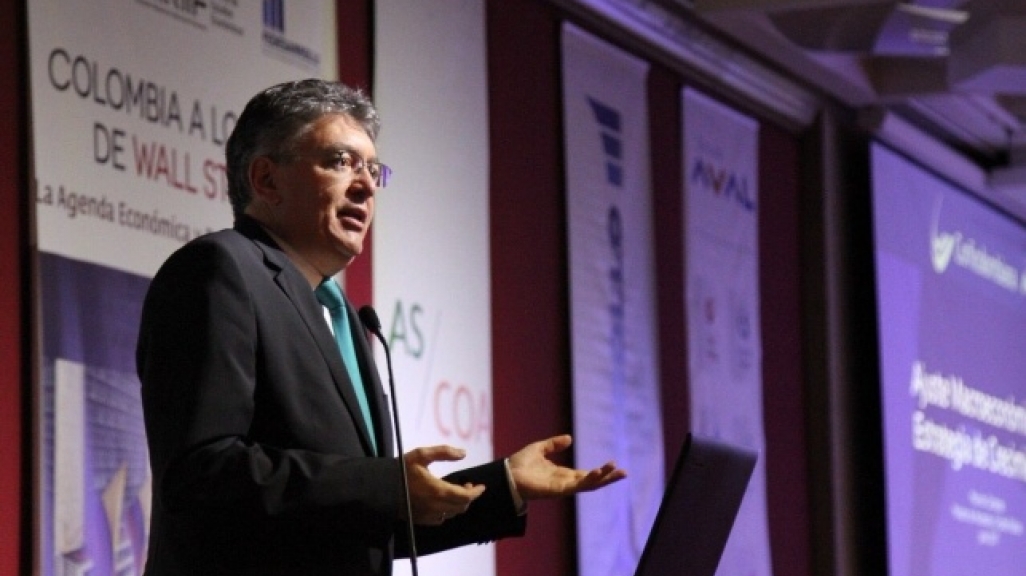Bogotá 2017 Recap: Colombia in the Eyes of Wall Street
Bogotá 2017 Recap: Colombia in the Eyes of Wall Street
A glass-half-empty-or-half-full debate dominated much of the discussion at AS/COA’s twenty-first conference in the Colombian capital.
Speakers:
- Mauricio Cárdenas, Minister of Finance of Colombia (Download his presentation.)
- Fernando Cepeda, Former Interior Minister of Colombia and Political Analyst
- Sergio Clavijo, Director, ANIF (Download his first and second presentation.)
- Iván Duque, Colombian Senator, Democratic Center Party (Download his presentation.)
- Richard Francis, Director of Sovereign Ratings, Fitch Ratings (Download his presentation.)
- Mauricio Garrón, Director of Analysis and Energy Strategies, CAF – Development Bank of Latin America (Download his presentation.)
- Munir Jalil, Director, Chief Economist for the Andean Region, Citi
- Marta Lucía Ramírez, Former Minister of Defense of Colombia (Download her presentation.)
- Leonardo Villar, Executive Director, Fedesarrollo (Download his presentation.)
- Adriana La Rotta, Senior Director of Media Relations, Americas Society/Council of the Americas
Lea una versión del resumen en español.
AS/COA’s Adriana La Rotta gave the opening remarks at the organizations’ twenty-first annual conference in Bogotá, pointing to the country’s 16 free-trade agreements, the doubling of the middle class since 2002, and increased foreign investment as some of the country’s most notable evidences of progress. The country is in a critical moment, she said, as it works to implement the peace accord with the Revolutionary Armed Forces of Colombia, or FARC, an issue that will be sure to continue to dominate the political agenda and be a central theme of presidential debates during the 2018 election season.
#ColWallSt @adrianalarotta inicia su intervención. Los avances ha situado a Colombia en los primeros lugares de los países emergentes. pic.twitter.com/fwNhPxSqGI
— Escuela de Economía (@Economia_USA) June 7, 2017
Colombia's Finance Minister Mauricio Cárdenas then took the stage to address the country's economic prospects, the results of December’s fiscal reforms, and the challenges that remain to increase Colombia's growth. The minister spoke of a multidimensional strategy to reduce poverty, tackling areas from education to health, which supported a decline in the poverty rate from 30 percent to 17 percent. He also pointed out that, for the first time, half of the Colombian workforce is formally employed, an important accomplishment in a region with high informality rates.
Inversión extranjera en el país se ha incrementado. USD 6.430 millones en 2010 vs USD 13.593 millones en 2016. Más del doble pic.twitter.com/EAIVksI95H
— Mauricio Cárdenas S. (@MauricioCard) June 7, 2017
Cárdenas went on to discuss efforts to diversify the economy, making it less dependent on the petroleum sector in favor of agricultural and other products as exports. At the same time Colombia's foreign debt remains high and the country must continue to find a better balance to be able to absorb external shocks.









